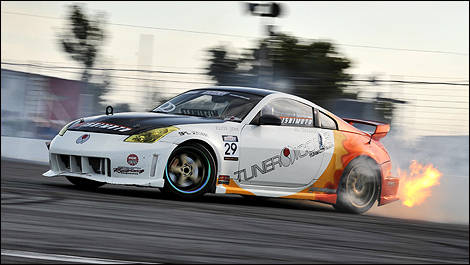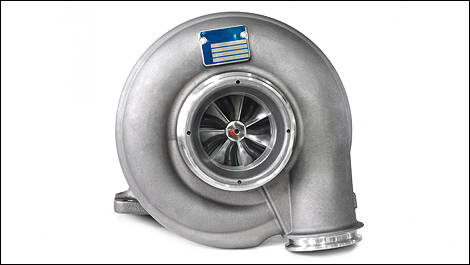Mechanically increasing engine air intake through either a turbocharger or supercharger is an easy and effective way to increase the combustion and, therefore, the power produced by an engine. Instead of the engine swallowing the surrounding air normally, it is forced through the intake manifold by mechanical means, thus allowing smaller engines to produce higher outputs.
There are two popular mechanical devices that can achieve such results: the turbocharger and the supercharger.
Turbochargers kick in at relatively low engine speeds and instantly produce maximum boost. However, the unit absorbs tremendous heat and needs to cool off periodically in order to avoid breakdown.
Superchargers operate at lower temperatures and provide a more linear powerband, putting less strain on engine internal components. Throttle response is slower, and the noise level is higher than the turbocharger.
Let's find out more…
The turbocharger
This device is essentially a turbine composed of air-driven impellers. A turbocharger is comprised of two main sections: one hot and one that is cooler. The hot section is directly attached to the vehicle exhaust system. The exhausted engine gas drives the impeller in the hot section, which in turn drives the rimpeller in the cooler section, thus force-feeding air into the engine intake manifold. This system is installed as closely as possible to the exhaust port so as to minimize lag, or delay.
As soon as the impellers reach operating speed (around 2,000 rpm), the boost is instantaneous and remains at its maximum level up to higher engine speeds, within the power band that is determined by the size of the turbocharging unit.
The air pressure thus produced is measured in pounds per square inch (PSI).
Turbochargers increase the atmospheric air pressure anywhere between 6 to 20 PSI for gasoline-powered engines. Higher pressure translates into a higher risk of engine damage.
Because of their unique design, diesel-powered engines benefit from increases anywhere between 30 to 60 PSI.
There are two popular mechanical devices that can achieve such results: the turbocharger and the supercharger.
Turbochargers kick in at relatively low engine speeds and instantly produce maximum boost. However, the unit absorbs tremendous heat and needs to cool off periodically in order to avoid breakdown.
Superchargers operate at lower temperatures and provide a more linear powerband, putting less strain on engine internal components. Throttle response is slower, and the noise level is higher than the turbocharger.
 |
| Photo: Matthieu Lambert |
Let's find out more…
The turbocharger
This device is essentially a turbine composed of air-driven impellers. A turbocharger is comprised of two main sections: one hot and one that is cooler. The hot section is directly attached to the vehicle exhaust system. The exhausted engine gas drives the impeller in the hot section, which in turn drives the rimpeller in the cooler section, thus force-feeding air into the engine intake manifold. This system is installed as closely as possible to the exhaust port so as to minimize lag, or delay.
As soon as the impellers reach operating speed (around 2,000 rpm), the boost is instantaneous and remains at its maximum level up to higher engine speeds, within the power band that is determined by the size of the turbocharging unit.
The air pressure thus produced is measured in pounds per square inch (PSI).
Turbochargers increase the atmospheric air pressure anywhere between 6 to 20 PSI for gasoline-powered engines. Higher pressure translates into a higher risk of engine damage.
Because of their unique design, diesel-powered engines benefit from increases anywhere between 30 to 60 PSI.
 |


